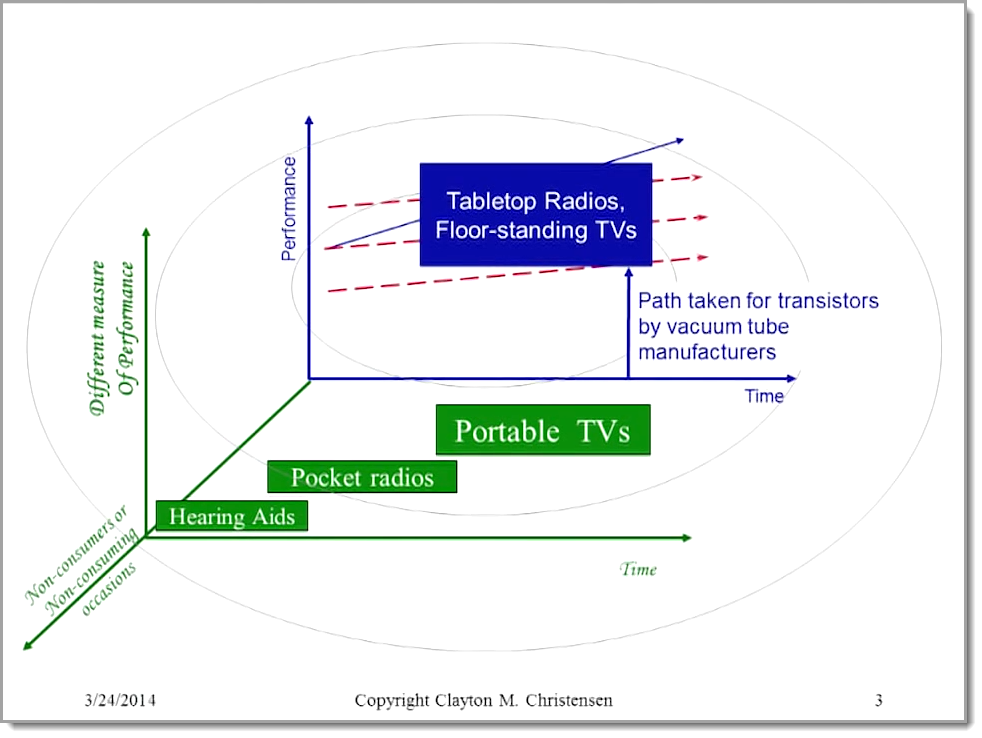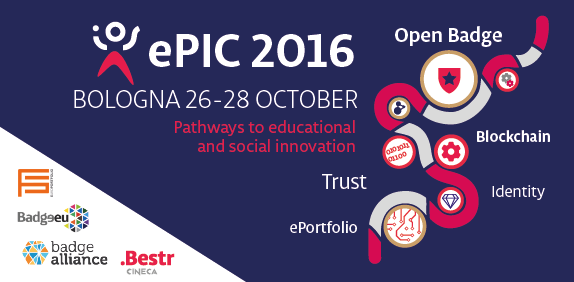Open Badges are a Disruptive Innovation
I may be coming late to this party (Tom Vander Ark mentioned this as early as March 2012), but I’m going to be reading more Clayton Christensen over the next while. Why? Because his theories about disruptive innovation help integrate a lot of the thinking that’s inspiring me about Open Badges and the recognition of learning.
Why are Open Badges a disruptive innovation? In a nutshell: Open Badges don’t have to be as “good” as the high quality diplomas and degrees issued by higher education. Instead, they can be a lesser quality, less costly, less difficult solution that fills unmet needs at the edges of the recognition of learning and achievement, such as for Associations.
There’s nothing wrong with less quality, if it’s appropriate for the need, especially if it’s provided at a lower cost and/or has lower barriers to entry. You don’t pour a foundation to build a mobile home. In the same way, Open Badges can be lightweight instead of heavyweight credentials, if those lightweight credentials are good enough to do the job, such as tack a new skill or achievement onto your résumé.
Over time, Open Badges technology and social infrastructure will continue to grow in “quality”and gravitas, with machine-readable taxonomies that enable searching, 3rd party endorsement and other forms of validation, rich extensions, improved post-issuing valorization markets and so on. Eventually they will likely become a more transparent, complete and flexible system than our current high quality diplomas and degrees. Diplomas and degrees will probably be seen more as recognition milestones rather than end points in lifelong learning careers.
This video from 2014’s Globalization of Higher Education conference was the trigger for me. Clayton Christensen was talking more about OER and MOOCs, but his observations apply equally well to Open Badges and the recognition of open learning:
… particularly the section starting at 14 minutes, where he moves on from the classic micro-computer example to talk about how Sony and Panasonic hollowed out the market for vacuum tubes by making transistors for unmet needs: smaller items, such as hearing aids and transistor radios:

gradually making them better and better,
… until by the mid-1980’s you could build pretty big things with solid state electronics. And one by one, it sucked the customers out of the core into the periphery and the periphery then became the core. All of the companies that made vacuum tube products vaporized.(Quoted from above at 19m14s)
This happened despite the vacuum tube industry spending 30 times the R&D money that Sony spent, trying to make transistors meet the needs of their current market. So it’s not like they didn’t see it coming, they were just locked into the needs of their current customer base.
Christensen doesn’t do a great job of describing the concept of non-consumption in the video; it’s better here in this interview with Business Innovation Factory:
According to Clay, true disruption occurs when companies compete against non-consumption. “A new-market disruption is an innovation that enables a larger population of people, who previously lacked the money or skill, now to begin buying and using a product and doing the job for themselves,” explains Clay.
If you’re an upstart chasing after the non-consumer, the great news is that your audience is non-discriminating. They want something easy to use and they want it cheap. They’re not expecting that same level of quality and performance. “Because,” says Clay, “something is so much better than nothing.” (bolding mine)
Tom Vander Ark was not the only person to see this before me. Here’s an excerpt from Giving Credit Where Credit Is Due:Designing Open Badges for a Technology Integration Course, written by a team from BYU:
This makes badges a textbook example of a disruptive innovation according to Christensen et al. (2011) as badges are cheap to produce, and are available to a segment of the education market not currently being served (bolding mine).
(I’m looking forward to discussing this further with one of the authors, BYU’s Rick West at the ePortfolio and Identity Conference next month.)
The Unmet Needs of Associations
Enter Associations as a large bloc of non-consumers of high quality, expensive credentials. Let’s leave aside the high stakes certifications of regulated professions for a moment; instead, think about non-regulated professional associations and industry associations.
Here’s a quote from a recent excellent white paper, The Association Role in the New Education Paradigm:
Associations are well known as advocates for our industries and professions. Less well known, but potentially even more important in today’s world, associations create standards, define boundaries between professional spheres, and identify competencies needed in the employment world. We create educational programming designed to fill needs unmet (bolding mine) by more traditional educational institutions and foster social connections and professional opportunity through networking. Where conventional educational curricula come up short, associations provide industry-specific bodies of knowledge. Where diplomas fail to demonstrate specific competencies, credible and well-designed credentialing and certification efforts can fill the gap.
Hmm… “needs unmet”. Unmet needs. Non-consumption as an opportunity.
In the section entitled “Where Do We Start?”, here’s one starting point that stood out for me:
Micro-Credentialing and Badging
Career paths are no longer linear and simple, with students earning a degree in a particular subject, getting a job in that field, progressing smoothly up a defined career ladder at one company, and retiring with the proverbial gold watch after 40 years. Resumes can’t be linear, either, anymore. Qualifications are now about competencies that can be mixed and matched as necessary to meet employer or licensing requirements. Micro-credentialing and badging were created specifically to address this new way of acquiring and demonstrating skills.(pg 30)
This is what IBM’s David Leaser was talking about when he said in our recent #openepic chat:
#Certifications limit the pool of talent. #OpenBadges expand the pool of talent
And later, from David in the same chat:
Proposal: Use certifications for credentials which have a shelf life of 2 years or more; use Open Badges for “liquid” skills.
Unmet needs again.
The Innovator’s Solution: Deakin Prime and Deakin Digital
What can academic institutions do? Again, from this interview with Business Innovation Factory:
Clay suggests shifting responsibility for answering the disruptive threat to an autonomous organization (bolding mine) that can then frame it as an opportunity. A new organization can pursue alternative channels, utilize different suppliers, and employ different services. Most importantly, they can do this without hindering their current, and most likely profitable value network while also giving their new growth ventures a solid foundation for success.
Can you say DeakinDigital, “a wholly owned subsidiary of Deakin University”? They’re now badging Masters level Recognition of Professional Practice for mid-careeer professionals – meeting unmet needs. They’re now run by the same CEO who runs DeakinPrime, Deakin’s corporate business training arm. This is an example of the Innovator’s Solution.
A bit like Madison Area Technical College’s badge approach to PACE/Corporate training. And several university Extension arms, such as Colorado State and Oregon State. (Typically) uncredentialed cash cows for their institutions.
So it’s starting at the edges… but beware of competition from agile upstarts.
Join us at ePIC in Bologna
I’ll be discussing this and other issues with Rick West, Bernard Bull, Dan Hickey, Connie Yowell, IBM’s David Leaser and a host of other enthusiasts (see speaker list.)
We’ll also be launching the Bologna Open Recognition Declaration. Current supporters of this declaration include Sir John Daniel, Stamenka Uvalić-Trumbic and Mark Surman. More to follow. Be one of them! Comments welcome at the Google Doc draft page.


